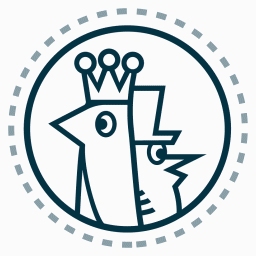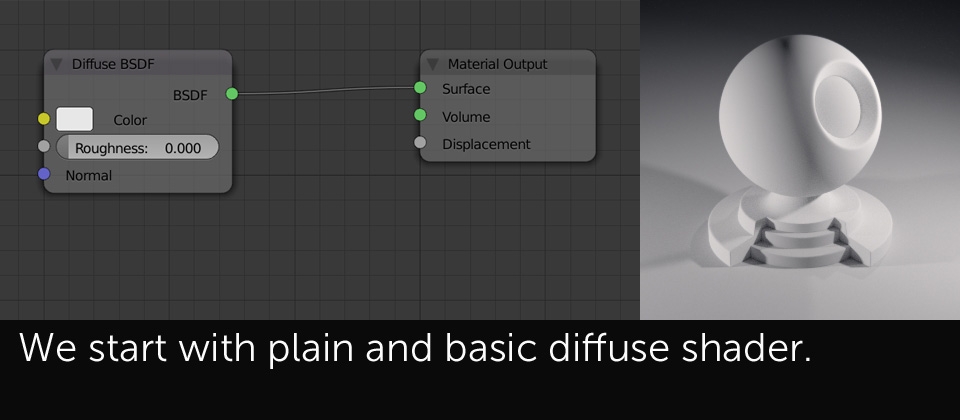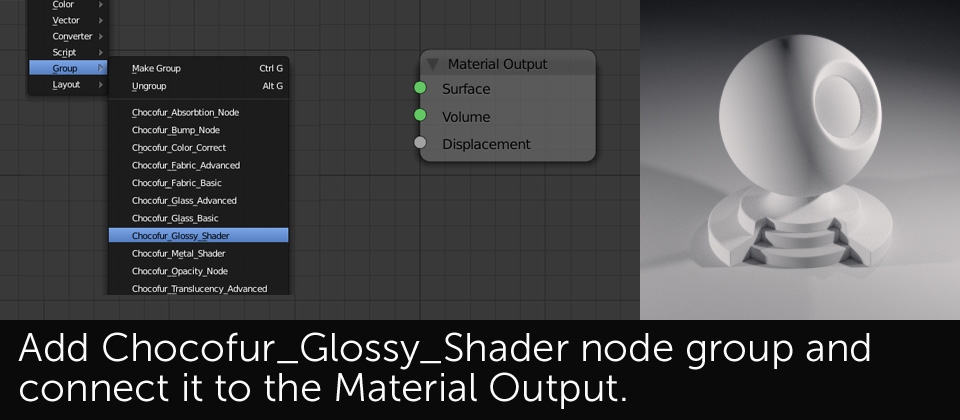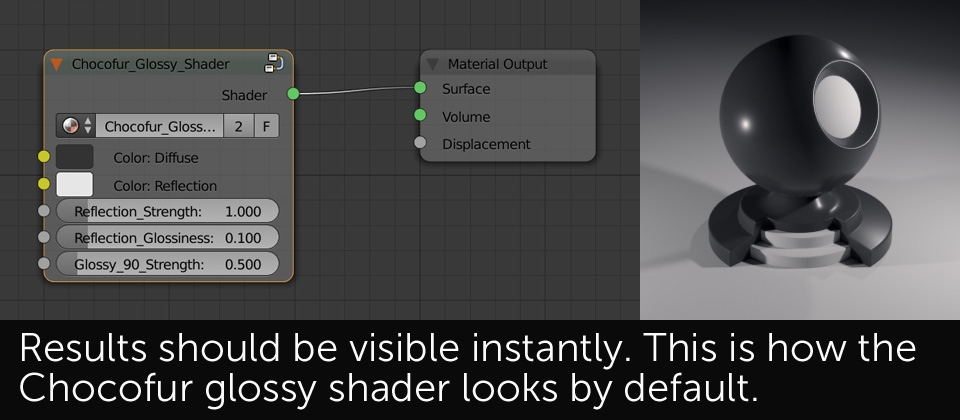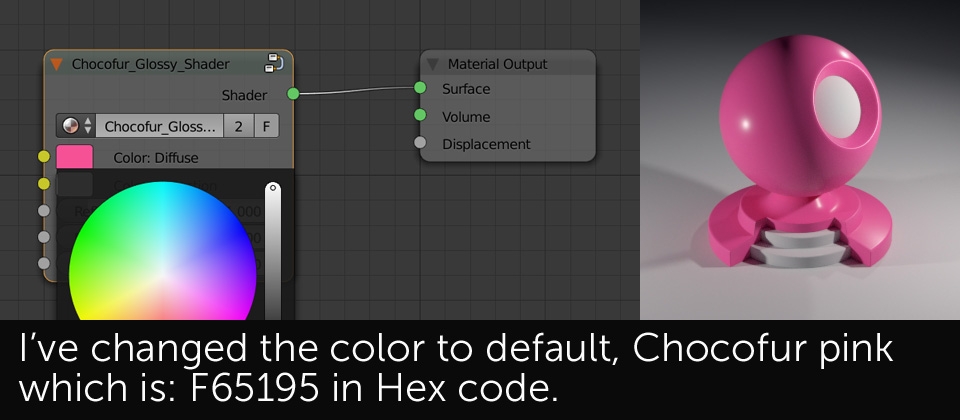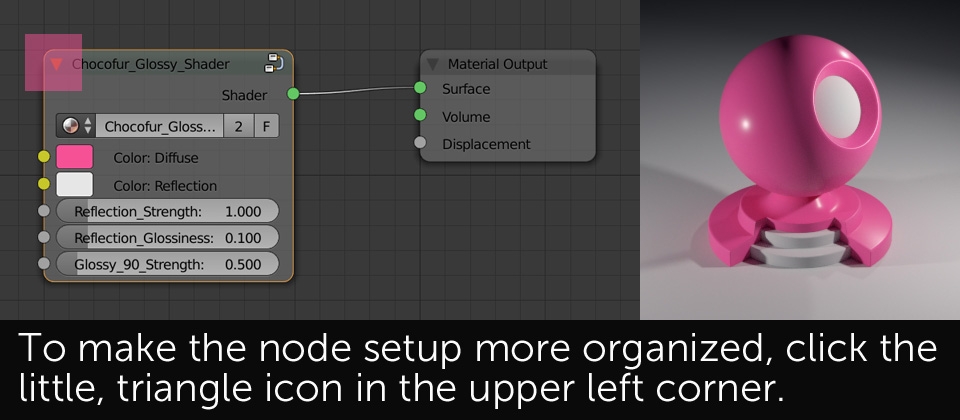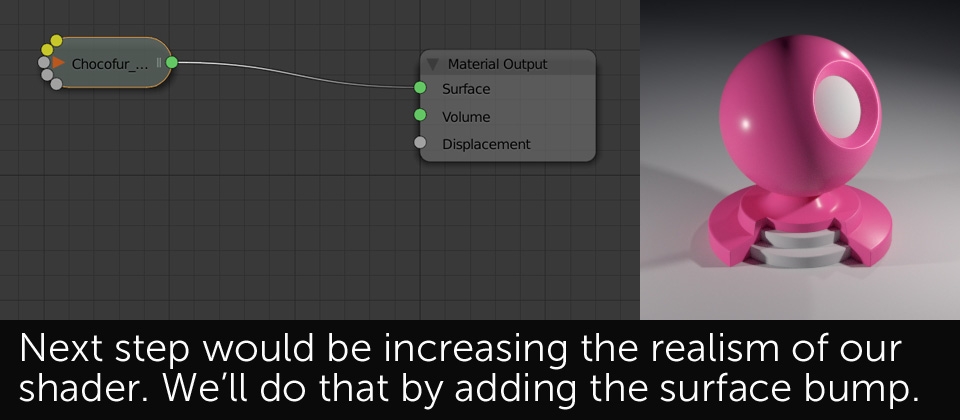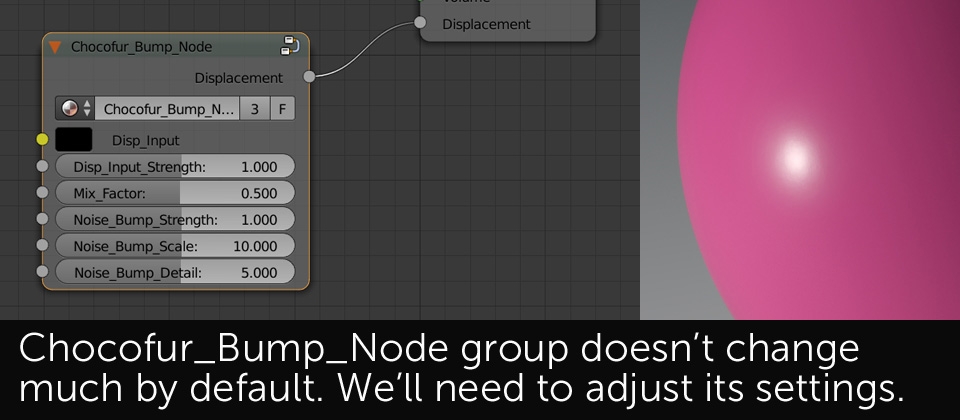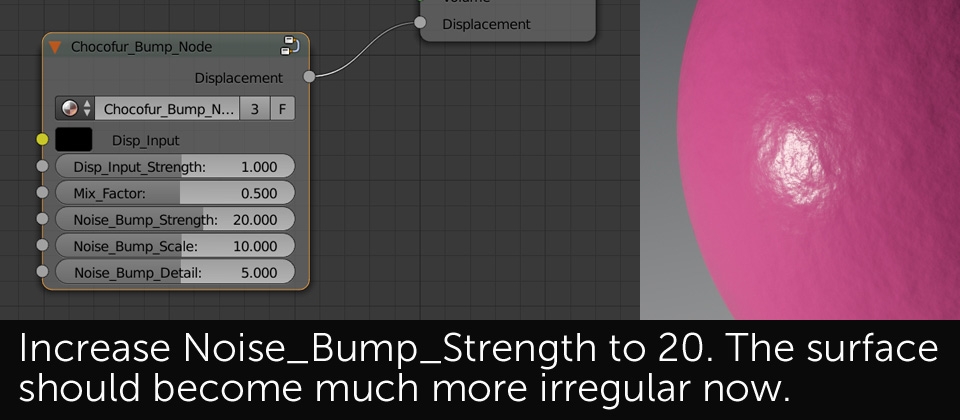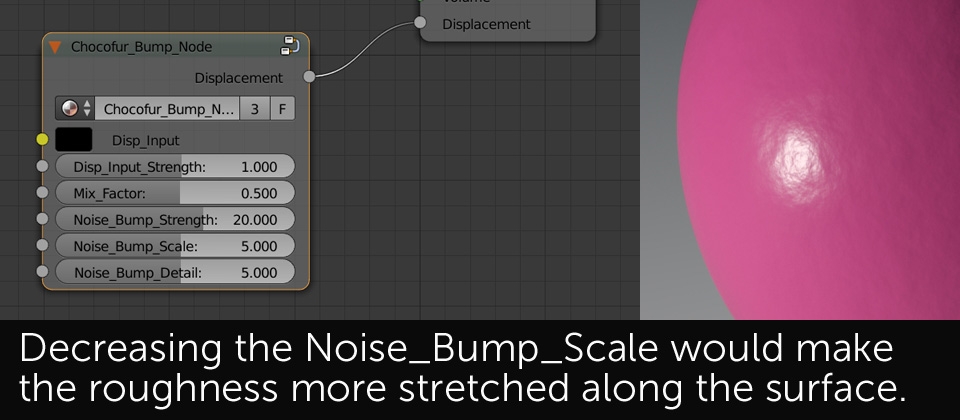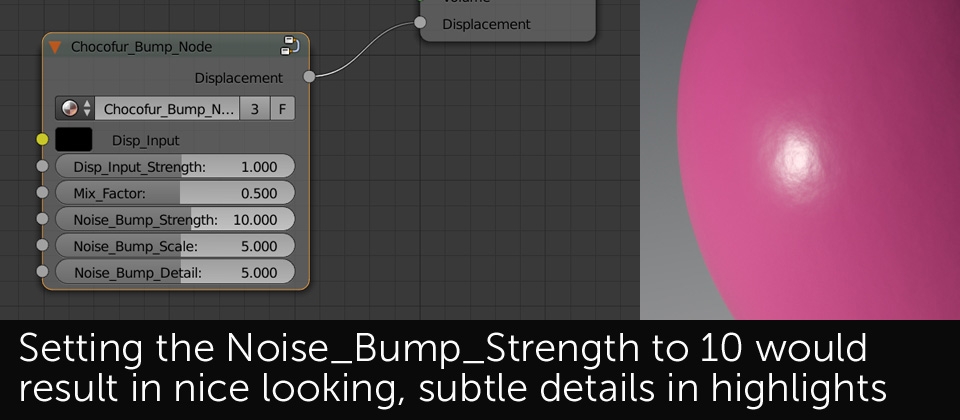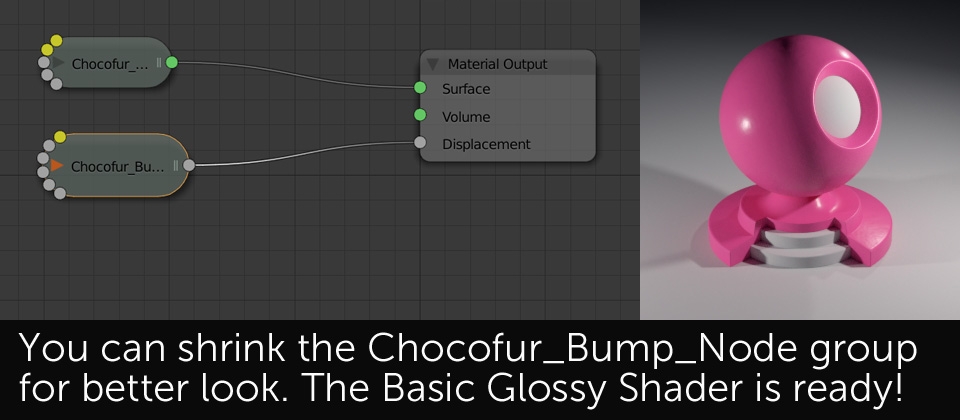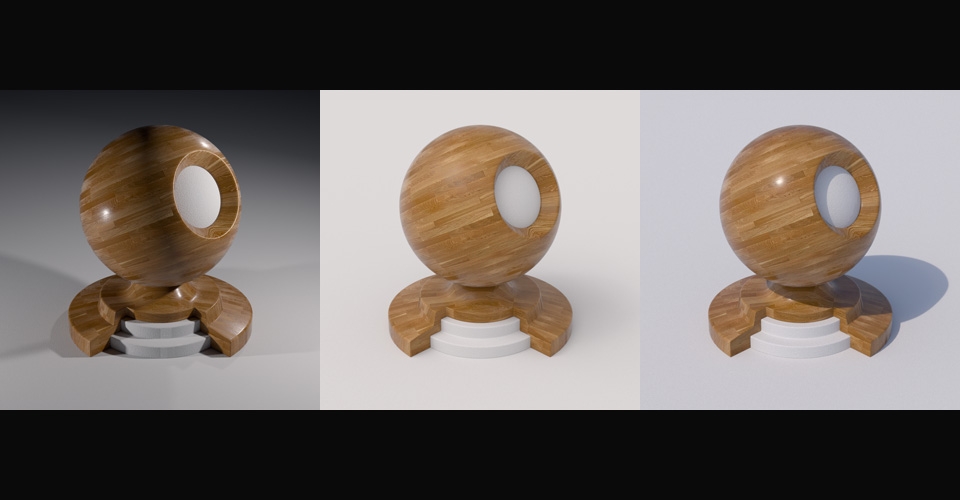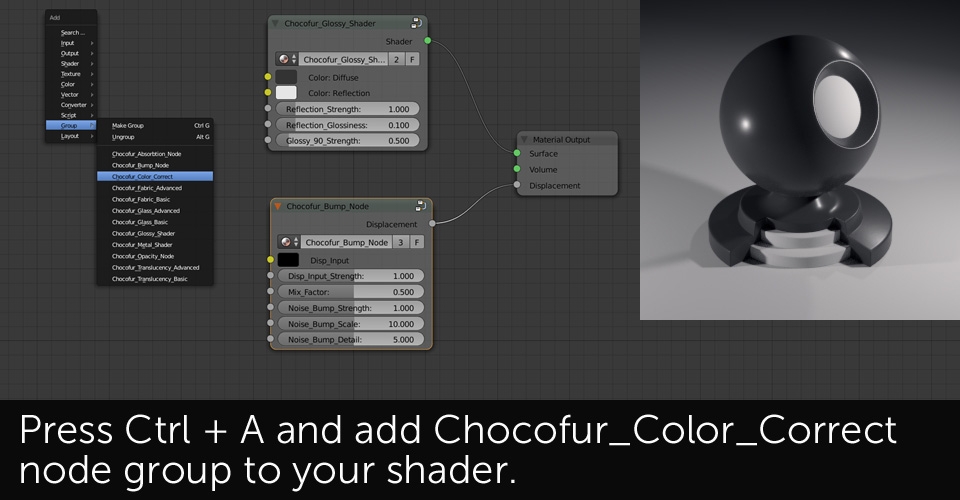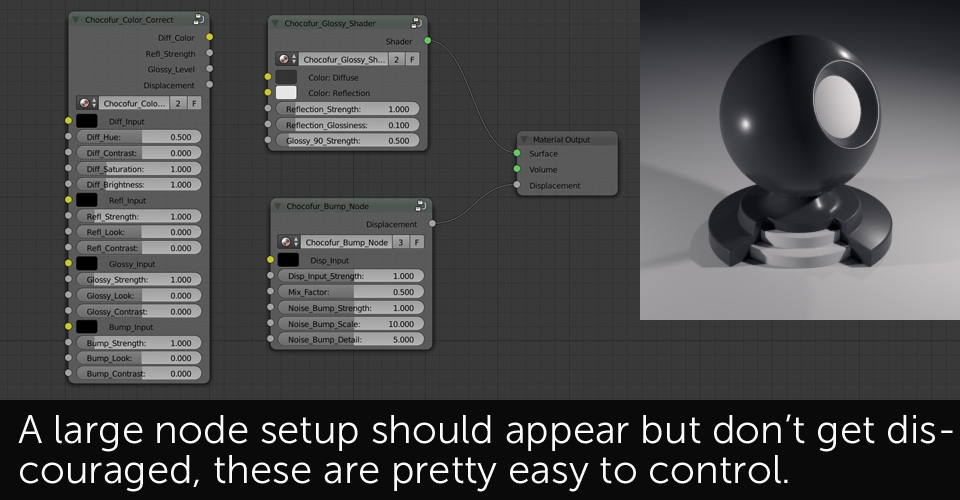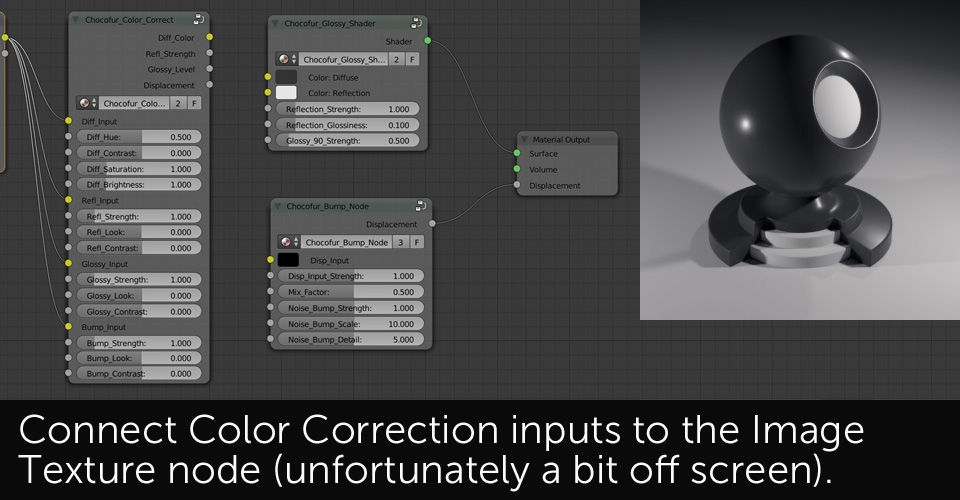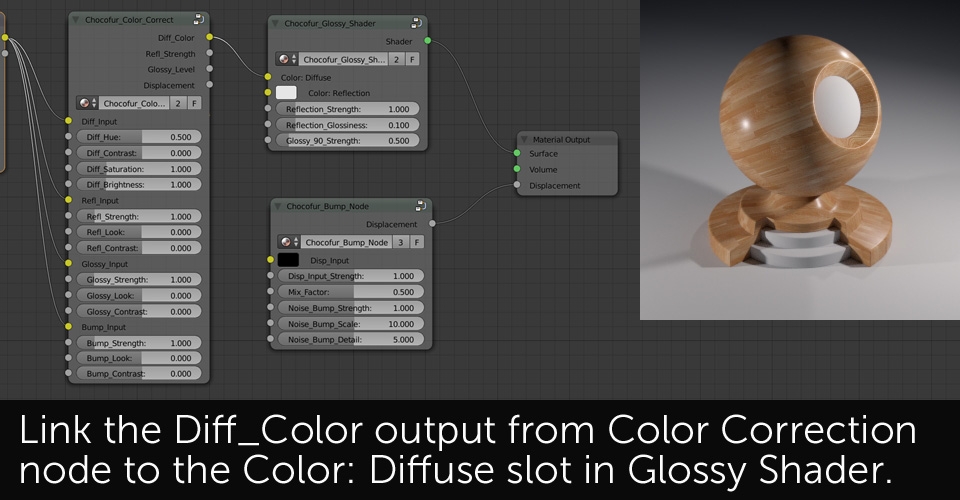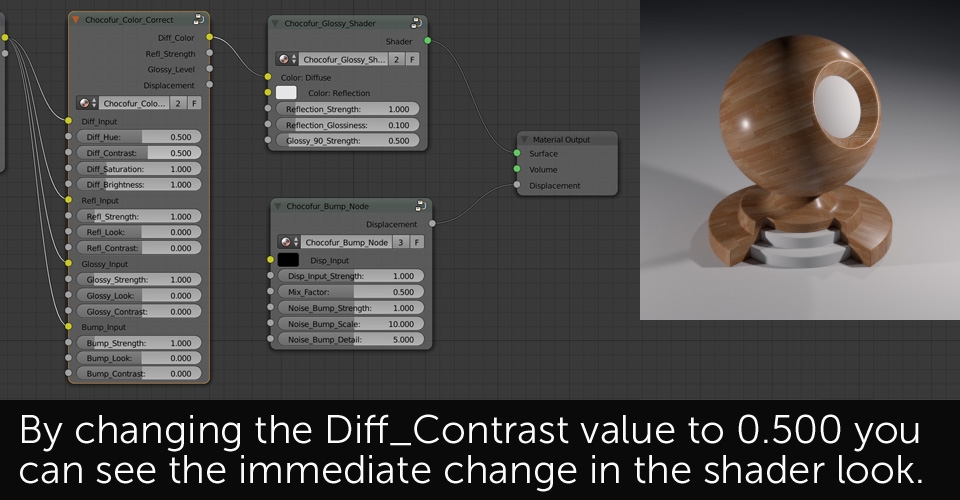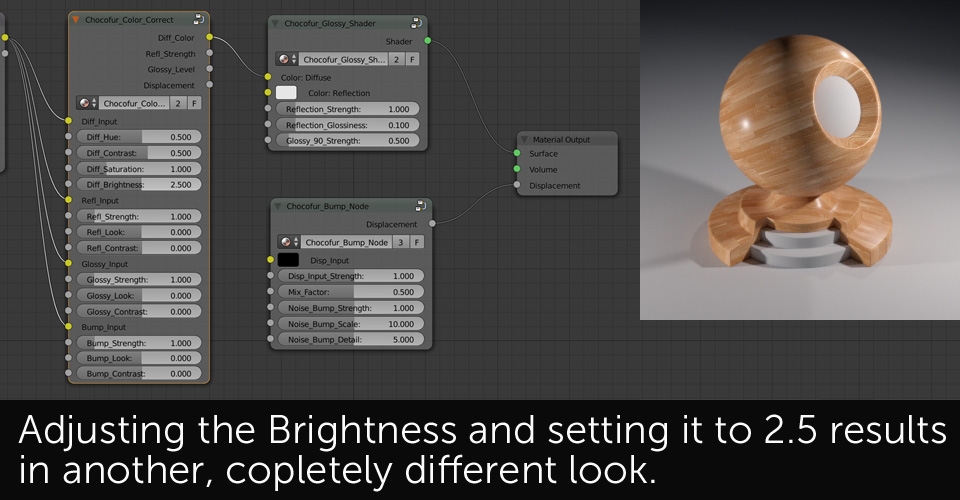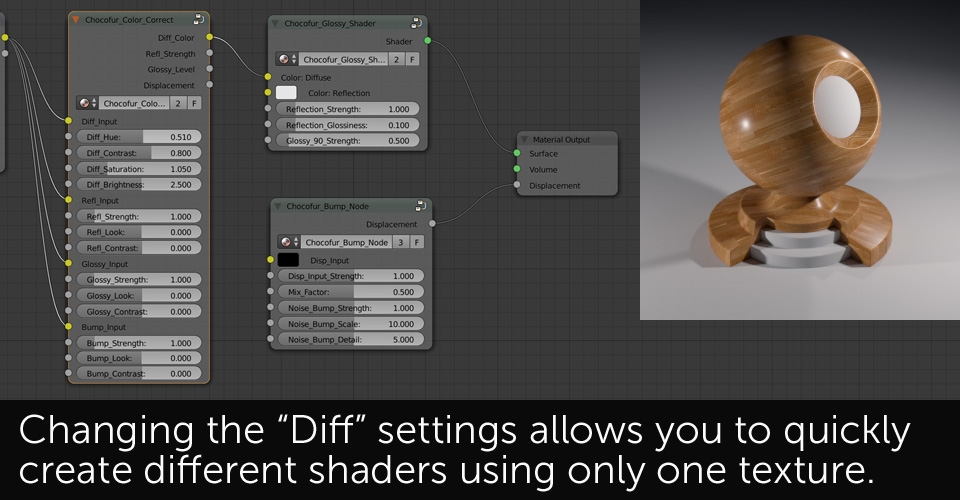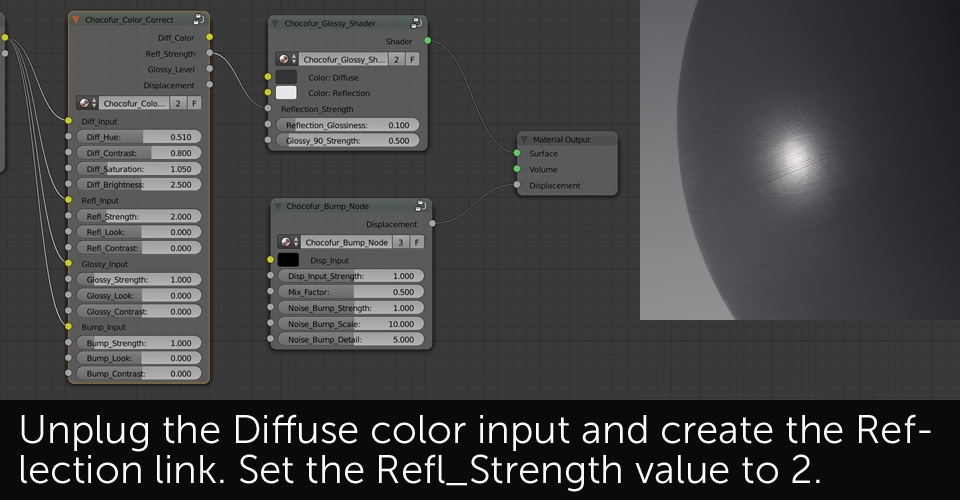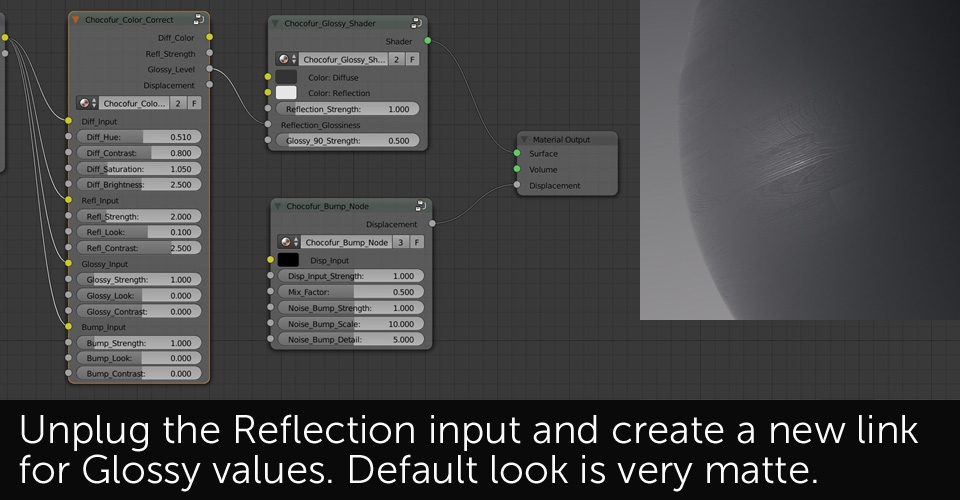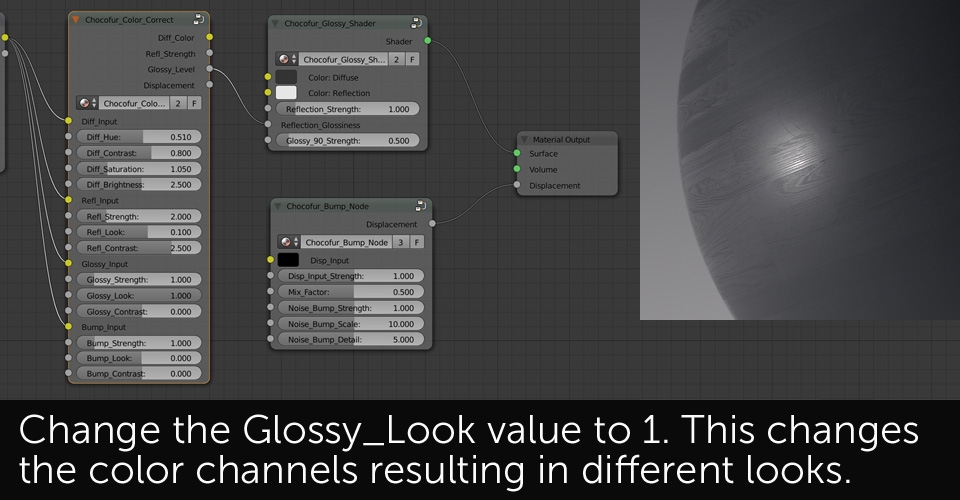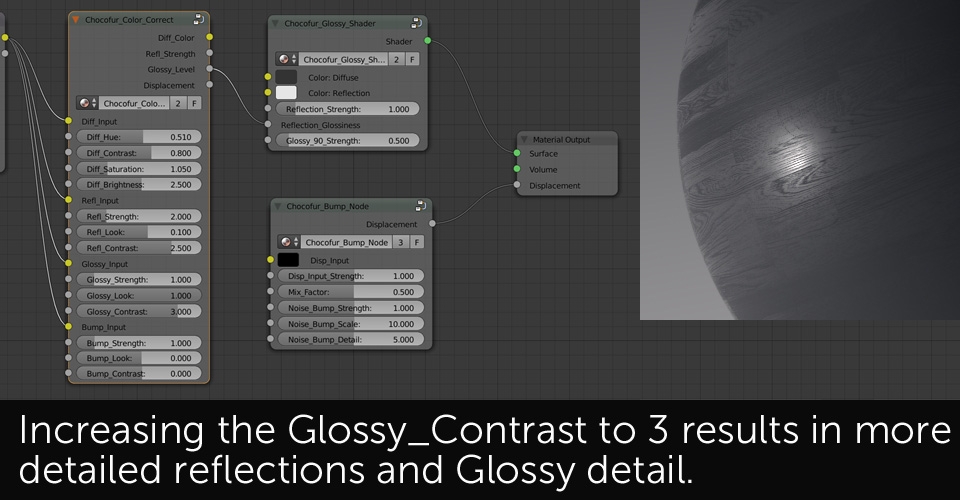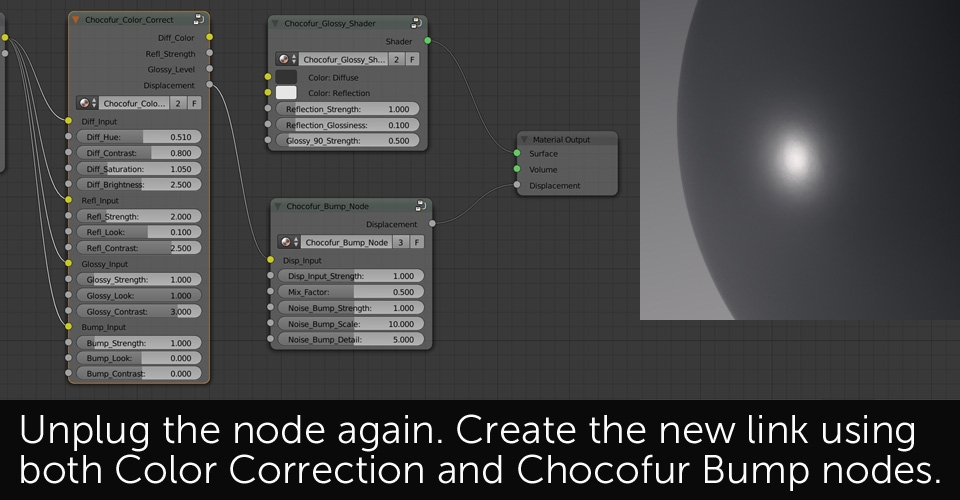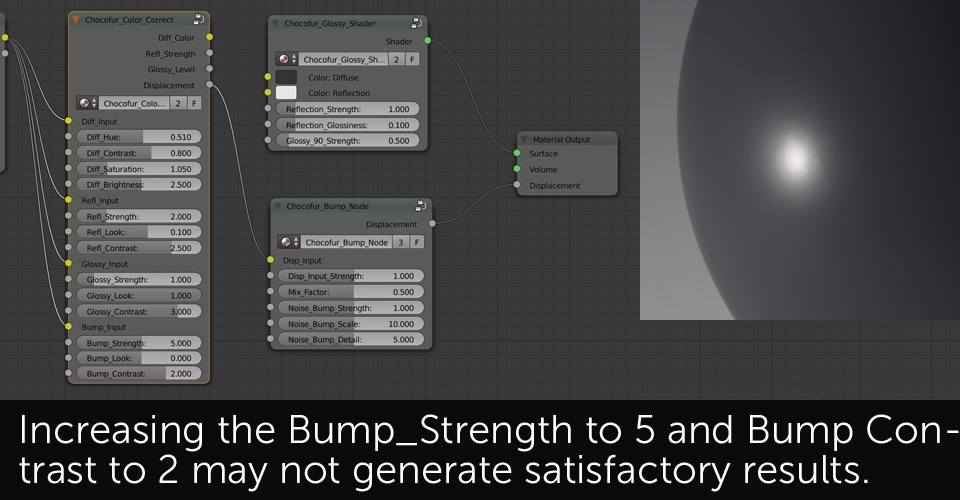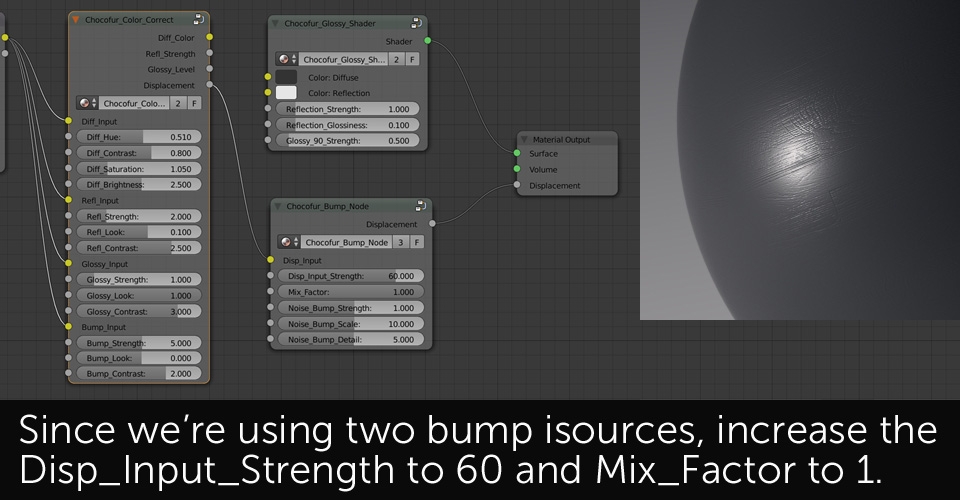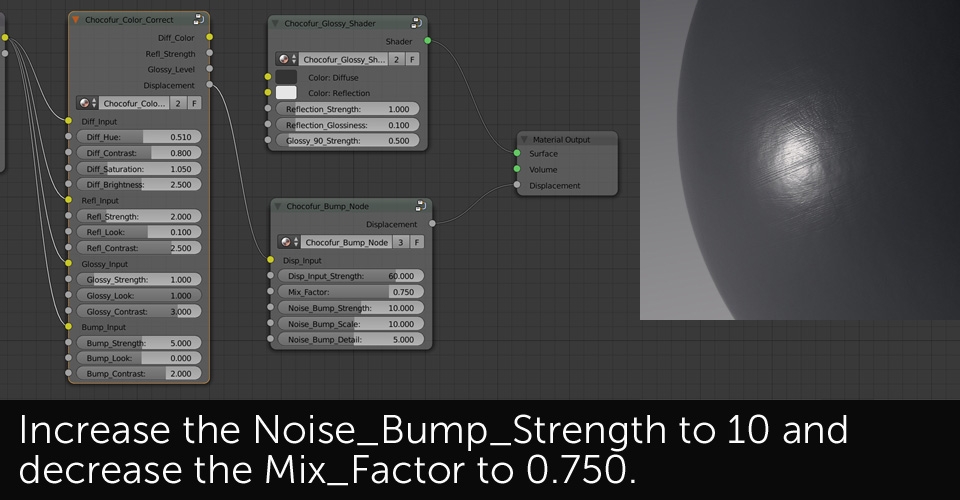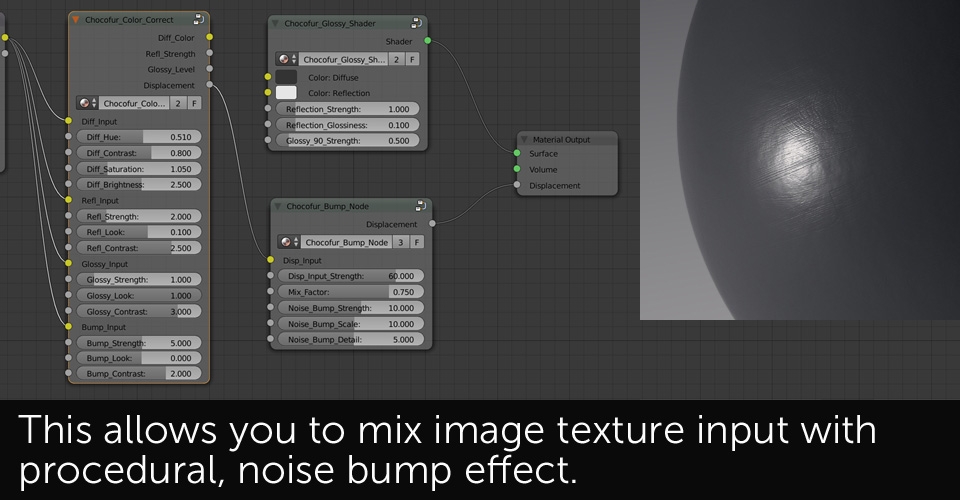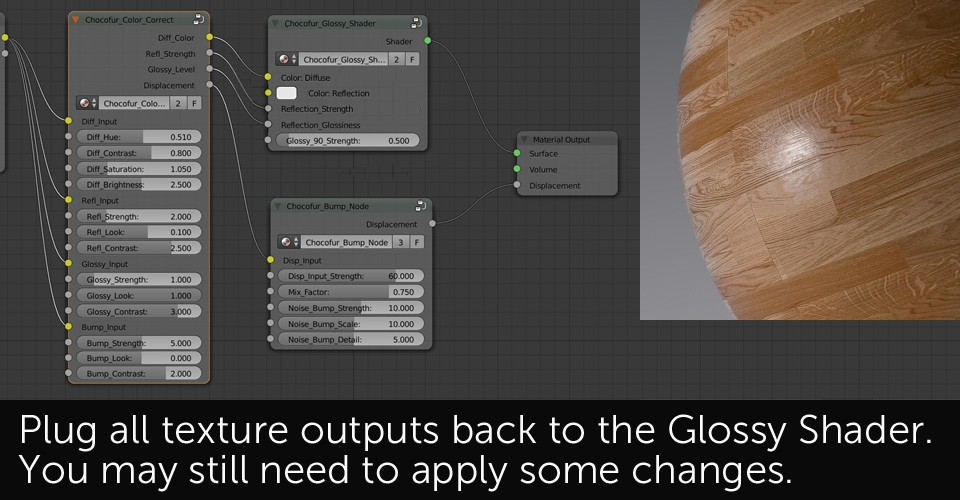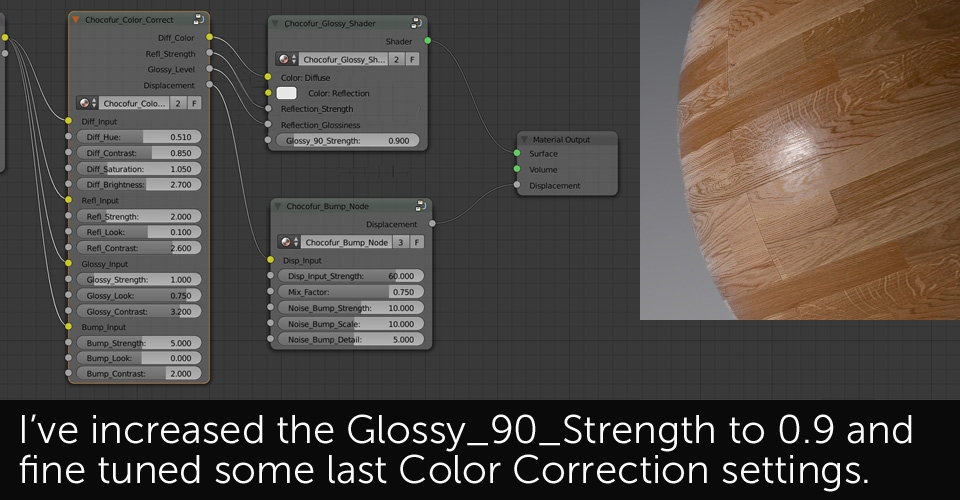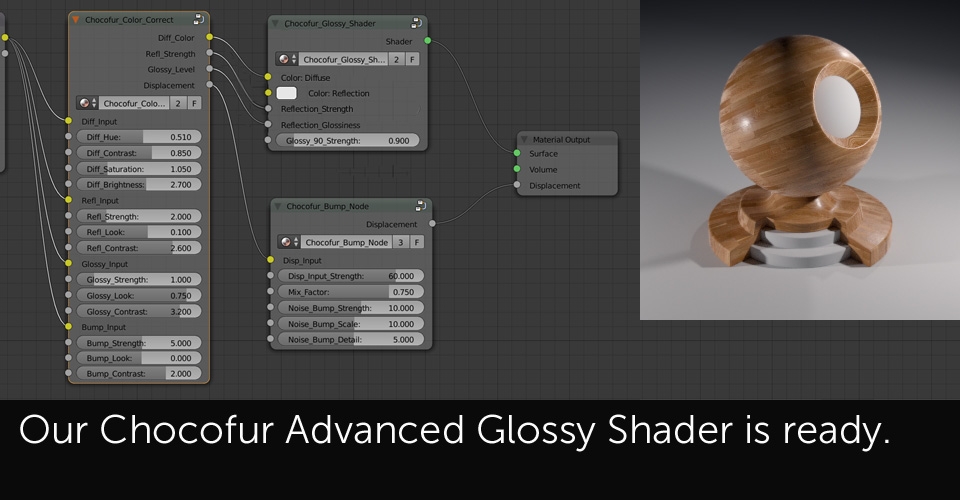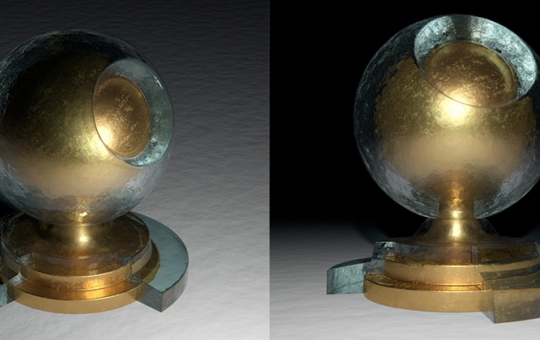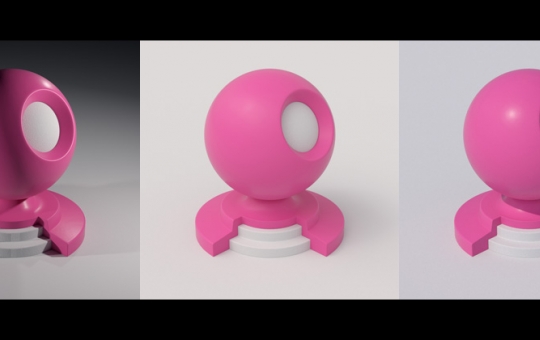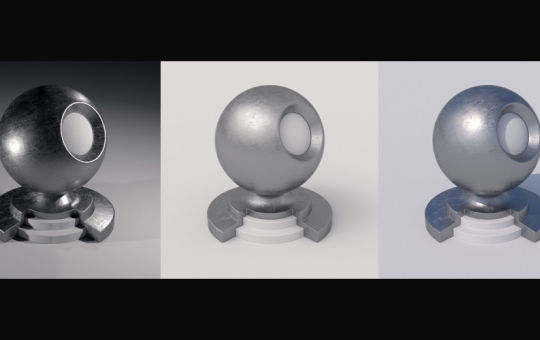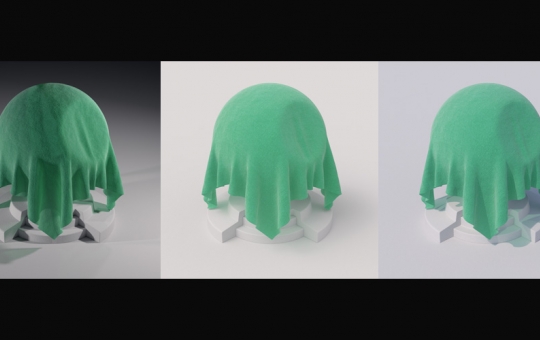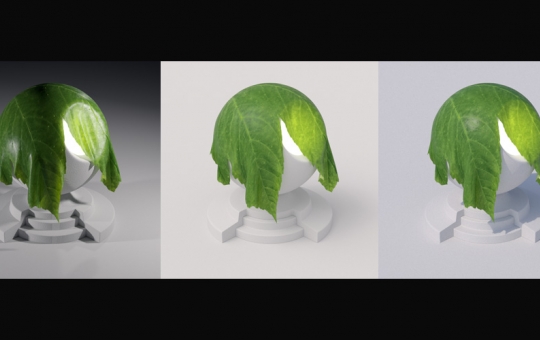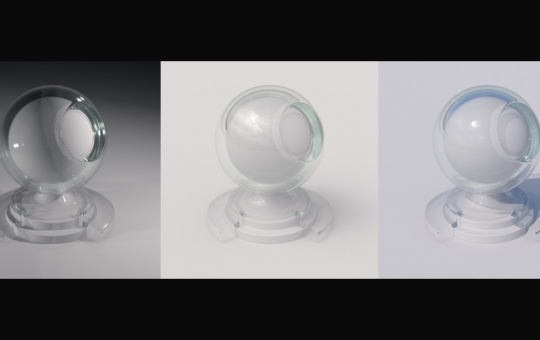
The Chocofur Basic Glossy shader is our most common material. The aim was to create a node group that could be easily adjusted for day to day use. This allows users to build more complex materials by mixing them with advanced node groups.
A short comment regarding some techniques we're using. We've decided to separate the bump settings and close them in an independent node group as they would unnecessarily complicate the clean and basic look of the glossy shading node. Our approach to each shader is to add the elements when things need to get more advanced and reducing them for more common uses.

The Chocofur Color Correction node group used in the example below is basically something you'd need to do manually when adjusting your texture maps inside Blender. That includes RGB Curves, Hue, Saturation, Value tweaks or R, G, B, channel separation. Just experiment to see how the texture inputs and values affect the final shader. It's not hard, just requires some time.
An important note on setting up the textured, glossy shaders in general. Despite showing you the way the Advanced Chocofur Glossy Shader can be set up, we would recommend starting the adjustments from the end. Create very shiny, dark material and start with setting up the surface bump. Then switch it off and adjust the surface glossiness. Next, move to the reflections adjusting the surface diffuse colors in the end. Finally, combine all elements and fine tune the result. By taking this approach you can be sure that each material aspect is configured independently and looks exactly as you wanted.
